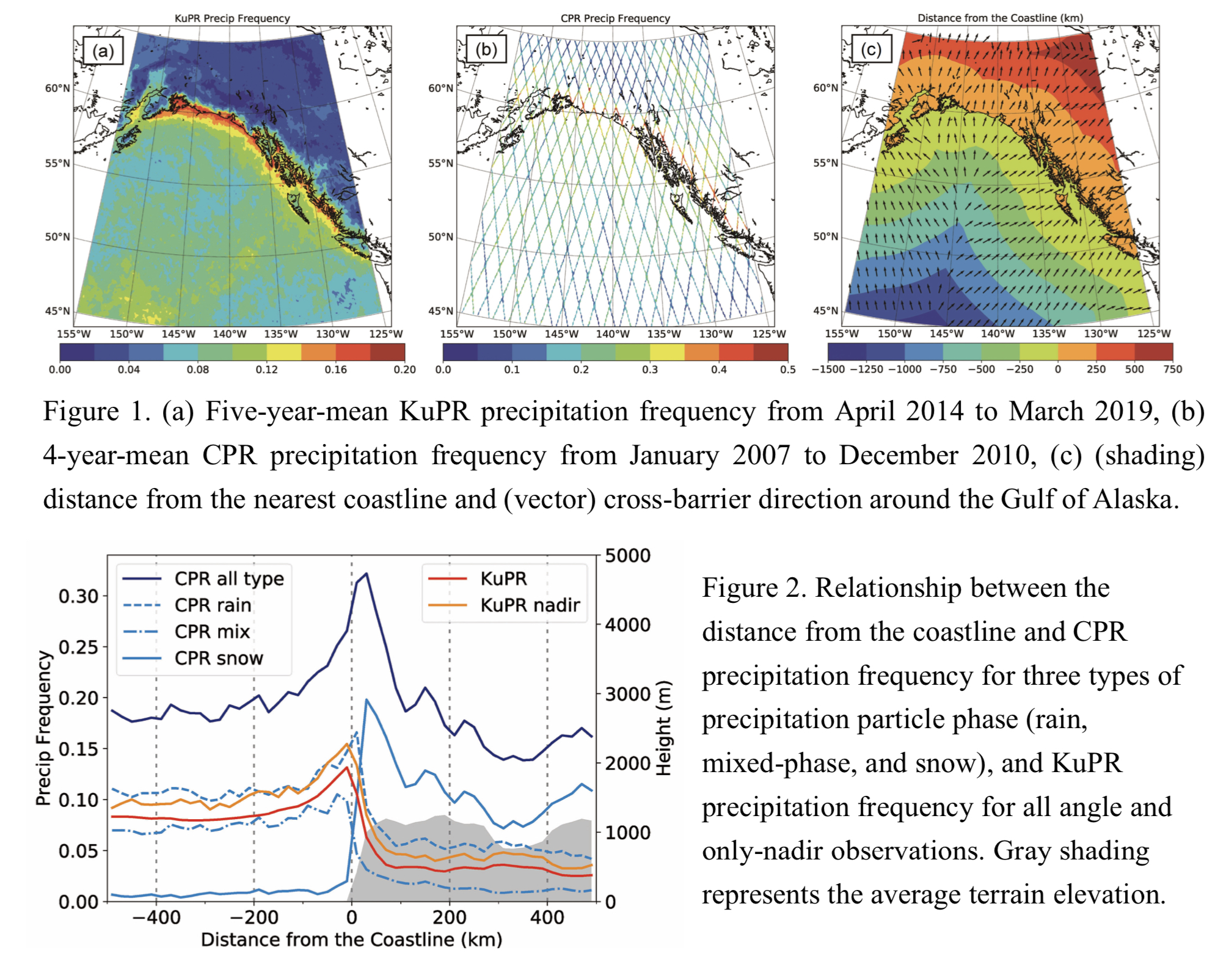Graphical Abstract
Aoki, S., and S. Shige, 2021: Large precipitation gradients along the south coast of Alaska revealed by spaceborne radars. J. Meteor. Soc. Japan, 99, 5-25.
Special Edition on Global Precipitation Measurement (GPM): 5th Anniversary
https://doi.org/10.2151/jmsj.2021-001
Graphical Abstract
Published
Plain Language Summary: At high latitudes, discriminating the phase of precipitation, as well as amount, is crucial in grasping the hydrological cycle. This study investigates the horizontal and vertical distribution of precipitation along the south coast of Alaska, using two spaceborne radars: the Dual-frequency Precipitation Radar (DPR) KuPR onboard the Global Precipitation Measurement (GPM) Core Observatory and the Cloud Profiling Radar (CPR) onboard CloudSat. It reveals that the precipitation phase and amount considerably change with the distance from the coastline.
Highlights:
- Precipitation frequencies evaluated by the two spaceborne radars have their maximum values in different region: the KuPR-detected frequency has over the coastal waters (−20–0 km), and the CPR-detected frequency has over the coastal mountains (20–40 km).
- The difference arises because light-to-moderate snowfall frequently occur over the mountains, whereas rainfall and mixed-phase precipitation are dominant over the ocean.
- Moisture flows associated with extratropical cyclones from the Gulf of Alaska are blocked by terrain and delayed around the coast, leading to long-lasting precipitation along the coastline.







